So, you may or may not know that I love all things forensic science. I’m fascinated at the idea of how a tiny thread left behind at a crime scene can be matched to the shirt worn by the dog owned by getaway driver’s girlfriend. When I was invited to be part of the blog tour for April Henry’s new book, The Body in the Woods, I wanted to stray from the normal interview I usually do. I was hoping April would be willing to do a guest post about her research process. And she agreed!
But before we get to April’s post, let’s check out the book.
In this new series told from multiple perspectives, teen members of a search and rescue team discover a dead body in the woods.
Alexis, Nick, and Ruby have very different backgrounds: Alexis has spent her life covering for her mom’s mental illness, Nick’s bravado hides his fear of not being good enough, and Ruby just wants to pursue her eccentric interests in a world that doesn’t understand her. When the three teens join Portland County Sheriff’s Search and Rescue, they are teamed up to search for a autistic man lost in the woods. What they find instead is a dead body. In a friendship that will be forged in danger, fear, and courage, the three team up to find the girl’s killer—before he can strike one of their own.
This first book in April Henry’s Point Last Seen YA mystery series is full of riveting suspense, putting readers in the middle of harrowing rescues and crime scene investigations.
Sounds good, right? Without further ado, let’s welcome April to the blog!
Researching murder
If you write the kind of books I do, it helps to have a strong stomach. Like I have a character who dies from a stab wound in the second Point Last Seen book (the working title is Blood Will Tell). I wanted a character to use a particular knife to commit the murder, and I wanted to know what the medical examiner would be able to tell when he examined the body. (Even though the end result might not be much more than a few sentences, I wanted to get it right. It really bugs me when a writer hasn’t gotten it right.)
So I spent a long time reading a professional journal article about knife wounds called “Sharp Edged and Pointed Instrument Injuries” written by a forensic pathologist/neuropatholgist. It was complete with many, many photos. Actual photos taken of genuine knife wounds left in real dead people.
Even for me, at that point my creeped-out factor kicked in.
It’s weird, because while most of us like to read murder mysteries, in real life, I’m sure we would be sickened by the real thing. I think part of it is that books give us a safe way to face that things that really scare us, like death. Justice nearly always triumphs in a book, unlike in real life. Often mysteries offer convoluted plots and clever killers. In real life, I think most people die in large part due to at least one of the parties being drunk or on drugs.
Because of the type of books I write, I own a lot of books on how to investigate crimes, including a few homicide textbooks. Luckily for me the photos in these books tend to be in black and white.
For The Body in the Woods, I did some more general research as well. I read about how homeless teens survive in Portland and now know some of the best spots to recharge your phone or sleep if you don’t want to go to a shelter. I learned which bird species can be found in Portland’s Forest Park.
I also learned about strangling with a ligature, which is what happens to the victims in this book.
One of my favorite places to turn with research questions is the Crime Scene Writers group on Yahoo. A lot of active or retired cops/firefighters/paramedics hang out there and are happy to answer questions about police procedures, or DNA, or what possibly undetectable drug might be used to kill someone. (Note to would-be criminals: please don’t join!)
And every year, I go to the Writers Police Academy, which is like a summer camp for mystery writers held at a real-life police and fire academy. WPA has allowed me to experience handcuffing and being handcuffed, searching buildings as part of a SWAT team, testing for presumptive blood, taking fingerprints, watching a backpack bomb be blown up, and seeing how cops would react to a shooting rampage and hostage-taking in a classroom. (Ultimately, the hostage-taker, played by a another cop, was killed with blanks.)
To research my new series, I’ve got to trainings for Multnomah County Sheriff’s Office Search and Rescue (MCSO SAR) members. A few months ago, I attended the training they get from the medical examiner’s office called “The Faces of Death.” The woman who gave it said they had toned down the presentation from previous versions. Let’s just say I wouldn’t want to see the non-toned down version.
Every time I’m with the teens of MCSO SAR, I come away more impressed by what they do. For every sale made in person or online at Powells.com the first week The Body in the Woods is on sale, I will donate $1.69 to MCSO SAR.
~~~~~~~~~~~~~~~~~~~~~~~~~~~~~~~~~~~~~~~~
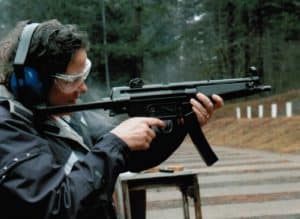 April Henry knows how to kill you in a two-dozen different ways. She makes up for a peaceful childhood in an intact home by killing off fictional characters. There was one detour on April’s path to destruction: when she was 12 she sent a short story about a six-foot tall frog who loved peanut butter to noted children’s author Roald Dahl. He liked it so much he arranged to have it published in an international children’s magazine. By the time she was in her 30s, April had started writing about hit men, kidnappers, and drug dealers. She has published more than a dozen mysteries and thrillers for teens and adults, with five more under contract.
April Henry knows how to kill you in a two-dozen different ways. She makes up for a peaceful childhood in an intact home by killing off fictional characters. There was one detour on April’s path to destruction: when she was 12 she sent a short story about a six-foot tall frog who loved peanut butter to noted children’s author Roald Dahl. He liked it so much he arranged to have it published in an international children’s magazine. By the time she was in her 30s, April had started writing about hit men, kidnappers, and drug dealers. She has published more than a dozen mysteries and thrillers for teens and adults, with five more under contract.
~~~~~~~~~~~~~~~~~~~~~~~~~~~~~~~~~~~~~~~~
Huge thanks to April for taking the time and sharing this information and photos! Also? I’m pretty sure that’s the best bio photo I’ve ever seen. Make sure you’re checking out her website {there’s all sorts of goodies}, following her on Twitter, liking her Facebook page and adding all of her books to your Goodreads shelf.
Now. If you’re super interested in The Body in the Woods — which you absolutely should be — I’ve got one up for grabs. Macmillan has so graciously offered one hardcover copy. Book will be coming from Macmillan, the giveaway is US/Canada only, additional giveaway rules are here.
**Good Luck!!**


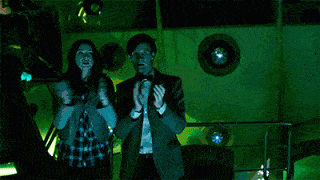
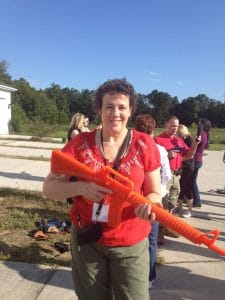
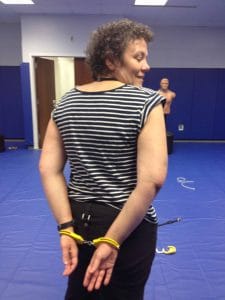
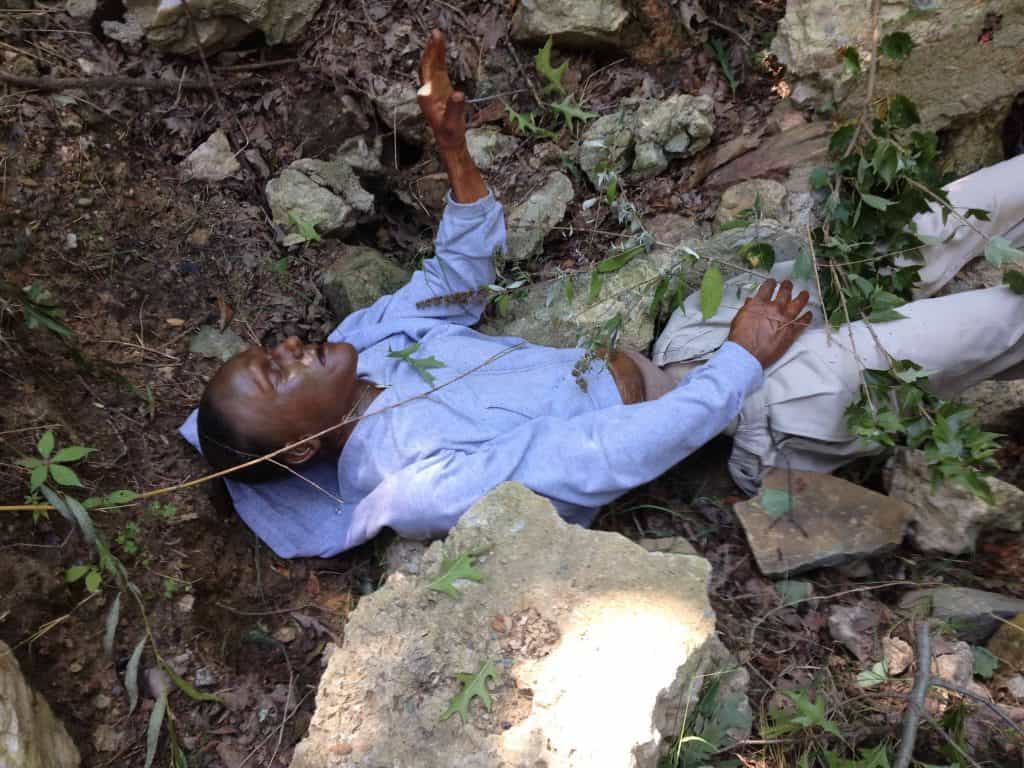

I would LOVE to join that kind of summer camp! I think you get accurate information from people who worked crime scenes and your writing reflects that!
LOVE how teens were on the search and rescue parties :)
LOVELY guest post :)
Thank you :)
That sounds like an amazing opportunity! So much to learn and useful information for writing and life. It would be awesome!
Yes, it certainly sounds like it would be interesting!
Maybe to meet authors, but not otherwise. I am not the most advantageous when it comes to realistic looking/feeling crime training.
I’m not a writer but it totally looks fun! Useful life skills! Lol!
Yes!! When I’m not reading I’m watching a bunch of crime/mystery shows on the Investigation Discovery channel. That would be an awesome experience.
Yes I would love to go and learn the real stuff not what’s on TV.